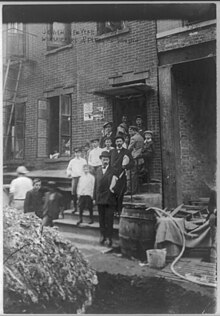
Isaac Bashevis Singer was a Polish-born Jewish-American novelist, short-story writer, memoirist, essayist, and translator. Some of his works were adapted for the theater. He wrote and published first in Yiddish and later translated his own works into English with the help of editors and collaborators. He was awarded the Nobel Prize for Literature in 1978. A leading figure in the Yiddish literary movement, he was awarded two U.S. National Book Awards, one in Children's Literature for his memoir A Day of Pleasure: Stories of a Boy Growing Up in Warsaw (1970) and one in Fiction for his collection A Crown of Feathers and Other Stories (1974).

Saul Bellow was a Canadian–American writer. For his literary work, Bellow was awarded the Pulitzer Prize, the 1976 Nobel Prize in Literature, and the National Medal of Arts. He is the only writer to win the National Book Award for Fiction three times, and he received the National Book Foundation's lifetime Medal for Distinguished Contribution to American Letters in 1990.
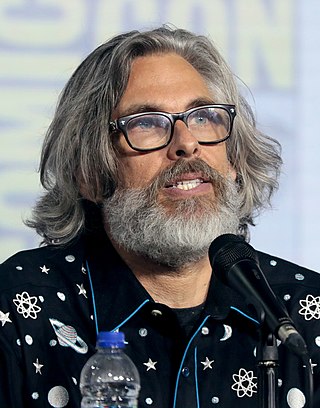
Michael Chabon is an American novelist, screenwriter, columnist, and short story writer. Born in Washington, D.C., he spent a year studying at Carnegie Mellon University before transferring to the University of Pittsburgh, graduating in 1984. He subsequently received a Master of Fine Arts in creative writing from the University of California, Irvine.

Philip Milton Roth was an American novelist and short-story writer. Roth's fiction—often set in his birthplace of Newark, New Jersey—is known for its intensely autobiographical character, for philosophically and formally blurring the distinction between reality and fiction, for its "sensual, ingenious style" and for its provocative explorations of American identity. He first gained attention with the 1959 short story collection Goodbye, Columbus, which won the U.S. National Book Award for Fiction. Ten years later, he published the bestseller Portnoy's Complaint. Nathan Zuckerman, Roth's literary alter ego, narrates several of his books. A fictionalized Philip Roth narrates some of his others, such as the alternate history The Plot Against America.
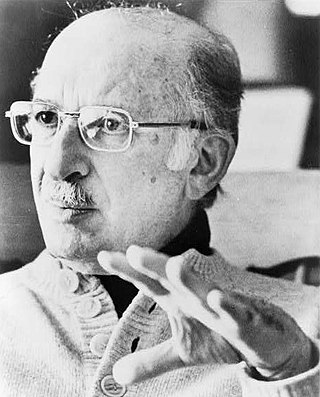
Bernard Malamud was an American novelist and short story writer. Along with Saul Bellow, Joseph Heller, Norman Mailer and Philip Roth, he was one of the best known American Jewish authors of the 20th century. His baseball novel, The Natural, was adapted into a 1984 film starring Robert Redford. His 1966 novel The Fixer, about antisemitism in the Russian Empire, won both the National Book Award and the Pulitzer Prize.
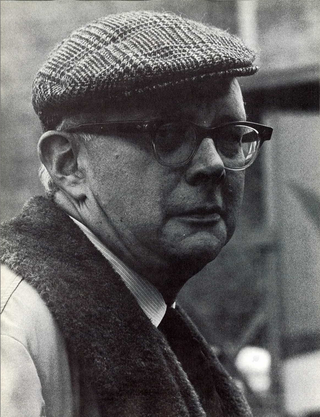
Irving Howe was an American literary and social critic and a prominent figure of the Democratic Socialists of America.
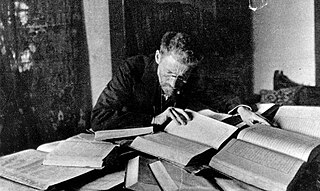
Israeli literature is literature written in the State of Israel by Israelis. Most works classed as Israeli literature are written in the Hebrew language, although some Israeli authors write in Yiddish, English, Arabic and Russian.
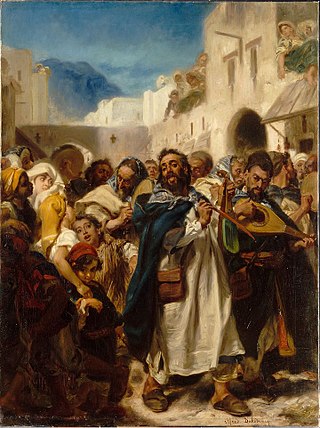
Jewish culture is the culture of the Jewish people, from its formation in ancient times until the current age. Judaism itself is not simply a faith-based religion, but an orthoprax and ethnoreligion, pertaining to deed, practice, and identity. Jewish culture covers many aspects, including religion and worldviews, literature, media, and cinema, art and architecture, cuisine and traditional dress, attitudes to gender, marriage, family, social customs and lifestyles, music and dance. Some elements of Jewish culture come from within Judaism, others from the interaction of Jews with host populations, and others still from the inner social and cultural dynamics of the community. Before the 18th century, religion dominated virtually all aspects of Jewish life, and infused culture. Since the advent of secularization, wholly secular Jewish culture emerged likewise.

Jewish literature includes works written by Jews on Jewish themes, literary works written in Jewish languages on various themes, and literary works in any language written by Jewish writers. Ancient Jewish literature includes Biblical literature and rabbinic literature. Medieval Jewish literature includes not only rabbinic literature but also ethical literature, philosophical literature, mystical literature, various other forms of prose including history and fiction, and various forms of poetry of both religious and secular varieties. The production of Jewish literature has flowered with the modern emergence of secular Jewish culture. Modern Jewish literature has included Yiddish literature, Judeo-Tat literature, Ladino literature, Hebrew literature, and Jewish American literature.
Edward Lewis Wallant was an American novelist who wrote The Pawnbroker (1961). It was adapted into an award-winning film of the same name, directed by Sidney Lumet and starring Rod Steiger. He also worked in the 1950s an art director at advertising firm McCann-Erickson.
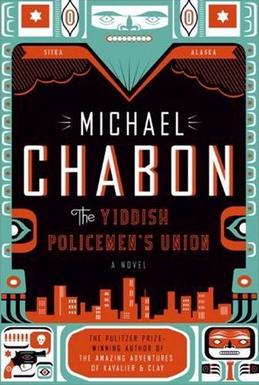
The Yiddish Policemen's Union is a 2007 novel by American author Michael Chabon. The novel is a detective story set in an alternative history version of the present day, based on the premise that during World War II, a temporary settlement for Jewish refugees was established in Sitka, Alaska, in 1941, and that the fledgling State of Israel was destroyed in 1948. The novel is set in Sitka, which it depicts as a large, Yiddish-speaking metropolis.
Sarah Blacher Cohen was an American writer, scholar, and playwright, and a professor at SUNY Albany for 30 years. Her area of specialty was Jewish American fiction. Her published books include Comic Relief: Humor in Contemporary American Literature, Saul Bellow's Enigmatic Laughter (1974), and Cynthia Ozick's Comic Art: From Levity to Liturgy. She edited From Hester Street to Hollywood: The Jewish-American Stage and Screen, Making a Scene: The Contemporary Drama of Jewish-American Women, and Jewish Wry: Essays on Jewish Humor. Her plays include The Ladies Locker Room, and Molly Picon's Return Engagement, a biographical play with music on the star of Yiddish theater. She collaborated with Joanne Koch, starting in 1989 on Sophie, Totie, and Belle, a musical on performers Sophie Tucker, Totie Fields, and Belle Barth. 'She and Joanne Koch also co-authored the plays Danny Kaye: Supreme Court Jester, Soul Sisters, Henrietta Szold: Woman of Valor, an adaptation of Saul Bellow stories entitled Saul Bellow's Stories Onstage: The Old System and a Silver Dish, and the multicultural musical Soul Sisters. Cohen and Koch co-edited an anthology of ten plays Shared Stages: Ten American Dramas of Blacks and Jews, including Driving Miss Daisy, Fires in the Mirror, and Soul Sisters. She collaborated with Isaac Bashevis Singer on the off-Broadway play Schlemiel the First. Cohen also gave talks and delivered papers, including "The Unkosher Comediennes: From Sophie Tucker to Joan Rivers." Her husband was Gary Cohen. She died of Charcot-Marie-Tooth disease on November 10, 2008 age 72.
Anarchism has been an undercurrent in the politics of Palestine and Israel for over a century. The anarchist ideology arrived in Palestine at the beginning of the 20th century, carried by a big wave of emigrants from Eastern Europe. The ideas of Peter Kropotkin and Leo Tolstoy had remarkable influence on famous exponents of some Left Zionists. Anarchists organized themselves across Israel and Palestine, and influenced the worker movement in Israel. Anarchists often call for a zero state solution, to the Palestinian Israeli conflict, in reference to a complete abolition of the states of Israel and Palestine.

Ruth Wisse is a Canadian academic and is the Martin Peretz Professor of Yiddish Literature and Professor of Comparative Literature at Harvard University emerita. She is a noted scholar of Yiddish literature and of Jewish history and culture.
Jacob Glatstein was a Polish-born American poet and literary critic who wrote in the Yiddish language. His name is also spelled Yankev Glatshteyn or Jacob Glatshteyn.
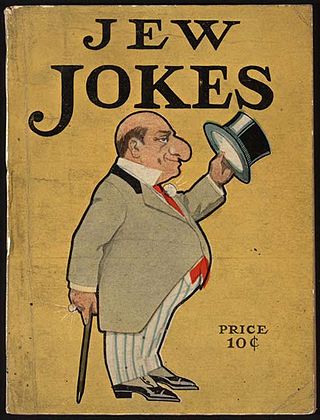
Stereotypes of Jews are generalized representations of Jews, often caricatured and of a prejudiced and antisemitic nature.
Irving Malin was an American literary critic. Malin attended Thomas Jefferson High School and Jamaica High School and graduated magna cum laude from Queens College in 1955 and received his PhD from Stanford University in 1958. He married Ruth Lief in 1955 and they remained married until his death. He taught at the City College of New York from 1960 until his retirement in 1996. Malin did his dissertation on the fiction of William Faulkner and made his initial academic mark as a critic of American Jewish Literature, editing an early collection on the fiction of Saul Bellow as well as a critical book and a general anthology on Jewish literature in the US. He subsequently became interested in writers who practiced innovative techniques such as James Purdy and John Hawkes as well as writers who broke down the boundaries between fiction and nonfiction such as William Styron and Truman Capote. One of the pioneering academics to take an interest in metafiction and experimental writing, Malin was an early contributor to the Review of Contemporary Fiction, writing over five hundred book reviews for this and other publications. In the latter portion of his career, Malin edited several anthologies of essays on Henry James, Thomas Pynchon, William Goyen, George Garrett, Don DeLillo, Vladimir Nabokov, Leslie Fiedler, and William Gass. He was a fellow at Yaddo and the Huntington Library and served on many boards and award panels. Malin died December 3, 2014.
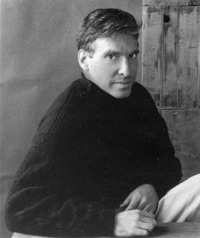
Benjamin Taylor is an American writer whose work has appeared in a number of publications including The Atlantic, Harper's, Esquire, Bookforum, BOMB, the Los Angeles Times, Le Monde, The Georgia Review, Raritan Quarterly Review, Threepenny Review, Salmagundi, Provincetown Arts and The Reading Room. He is a founding member of the Graduate Writing Program faculty of The New School in New York City, and has also taught at Washington University in St. Louis, the Poetry Center of the 92nd Street Y, Bennington College and Columbia University. He has served as Secretary of the Board of Trustees of PEN American Center, has been a fellow of the MacDowell Colony and was awarded the Iphigene Ochs Sulzberger Residency at Yaddo. A Trustee of the Edward F. Albee Foundation, Inc., he is also a Fellow of the New York Institute for the Humanities at New York University and a Guggenheim Fellow for 2012 - 2013. Taylor's biography of Marcel Proust, Proust: The Search, was published in October 2015 by Yale University Press as part of its newly launched Yale Jewish Lives series.
Hana Wirth-Nesher is an American-Israeli literary scholar and university professor. She is Professor of English and American Studies at Tel Aviv University, where she is also the Samuel L. and Perry Haber Chair on the Study of the Jewish Experience in the United States, and director of the Goldreich Family Institute for Yiddish Language, Literature, and Culture.

